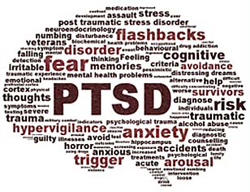The Physiology of Trauma
Most therapists are familiar with the presentation of someone that is suffering from post-traumatic stress disorder (PTSD). The individual is likely struggling with nightmares, flashbacks, dissociation, anxiety, or panic attacks. The symptoms can vary from person to person. They are generated by experiencing, witnessing or being aware of a traumatic event and/or neglect. For some, this could be a one-time event such as being in a car accident. It could also result from repeated exposure, for example, if a child has been subjected to continual abuse. Our brains store both unconscious and conscious memories. The conscious ones are the ones that we can access at will. Our unconscious memories — the ones that we aren’t aware of — have a strong link to the

 Most therapists are familiar with the presentation of someone that is suffering from post-traumatic stress disorder (PTSD). The individual is likely struggling with nightmares, flashbacks, dissociation, anxiety, or panic attacks. The symptoms can vary from person to person. They are generated by experiencing, witnessing or being aware of a traumatic event and/or neglect. For some, this could be a one-time event such as being in a car accident. It could also result from repeated exposure, for example, if a child has been subjected to continual abuse.
Most therapists are familiar with the presentation of someone that is suffering from post-traumatic stress disorder (PTSD). The individual is likely struggling with nightmares, flashbacks, dissociation, anxiety, or panic attacks. The symptoms can vary from person to person. They are generated by experiencing, witnessing or being aware of a traumatic event and/or neglect. For some, this could be a one-time event such as being in a car accident. It could also result from repeated exposure, for example, if a child has been subjected to continual abuse.
Our brains store both unconscious and conscious memories. The conscious ones are the ones that we can access at will. Our unconscious memories — the ones that we aren’t aware of — have a strong link to the emotional center of our brains. If a traumatic memory is stored here and the memory is triggered, the brain can process the experience as if the person was still in the traumatic situation.
A flight-or-fight state is an inherent form of self-preservation in a threatening situation. For those suffering from PTSD, this sympathetic nervous system response goes into overdrive and can result in long-lasting physiological symptoms. Trauma in childhood can result in brain damage and affect gene expression.
A whole-person team approach can be effective in the treatment of trauma. Mindfulness techniques help the individual to recognize and challenge his or her brain’s reactions. Some therapies such as Eye Movement Desensitization and Reprocessing (EMDR), Emotional Freedom Technique (EFT) and somatic experiencing can assist with the release of the physiologic response to a traumatic event. Yoga and bodywork, such as massage and acupuncture, help soothe the sympathetic nervous system.
Naturopathy targets ways to tonify the nervous system by addressing lifestyle, nutrition, and endocrine or other physiological imbalances. For example, caffeine can reduce one’s ability to manage anxiety, and or eating habits will impact blood sugar regulation.
Cortisol, the stress hormone, can be measured by salivary testing. Nutritional supplements can be used to reduce elevated levels or increase resilience to stress. Nervine herbs such as passion flower, kava kava, lavender and valerian help tonify the nervous system, while amino acids such as L-theanine and gaba can assist with calming neurotransmitters.
Validation and education about the body’s trauma response can be extremely helpful. It helps individuals suffering from PTSD or trauma make sense of an experience that may seem irrational or overwhelming. With treatment, the individual can increase his or her resiliency and experience relief from the symptoms of trauma and PTSD.
The post The Physiology of Trauma appeared first on ED Recovery.
SOURCE: ED Recovery – Read entire story here.






